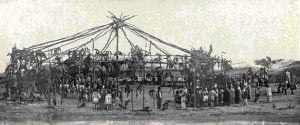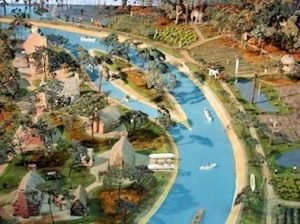Plains Indians Use of Rawhide
The Use of Rawhide. In the use of rawhide for binding and hafting (handle or strap), the Plains tribes seem almost unique. When making mauls and stone-headed clubs a piece of green or wet hide is firmly sewed on and as this dries its natural shrinkage sets the parts firmly. This is nicely illustrated in saddles. Thus, rawhide here takes the place of nails, twine, cement, etc., in other cultures. The Partleche A number of characteristic bags were made of rawhide, the most conspicuous being the parfleche. Its simplicity of construction is inspiring and its usefulness scarcely to be over-estimated. … Read more














